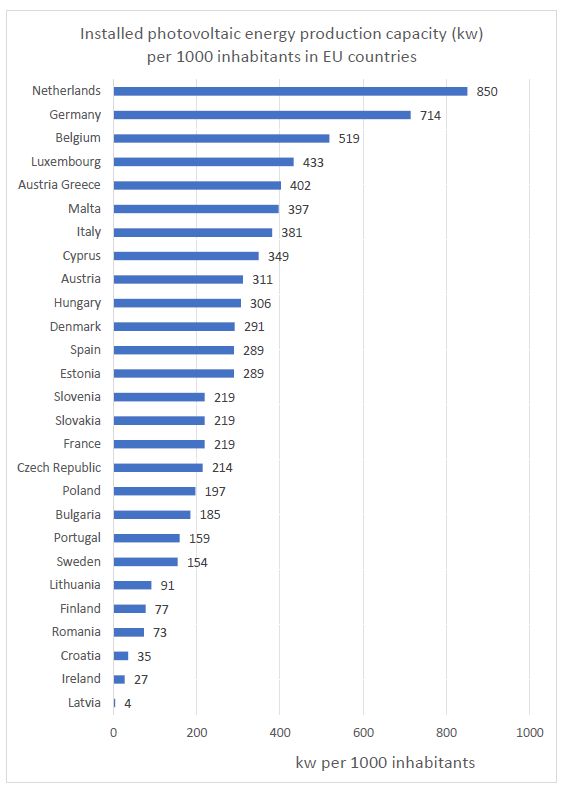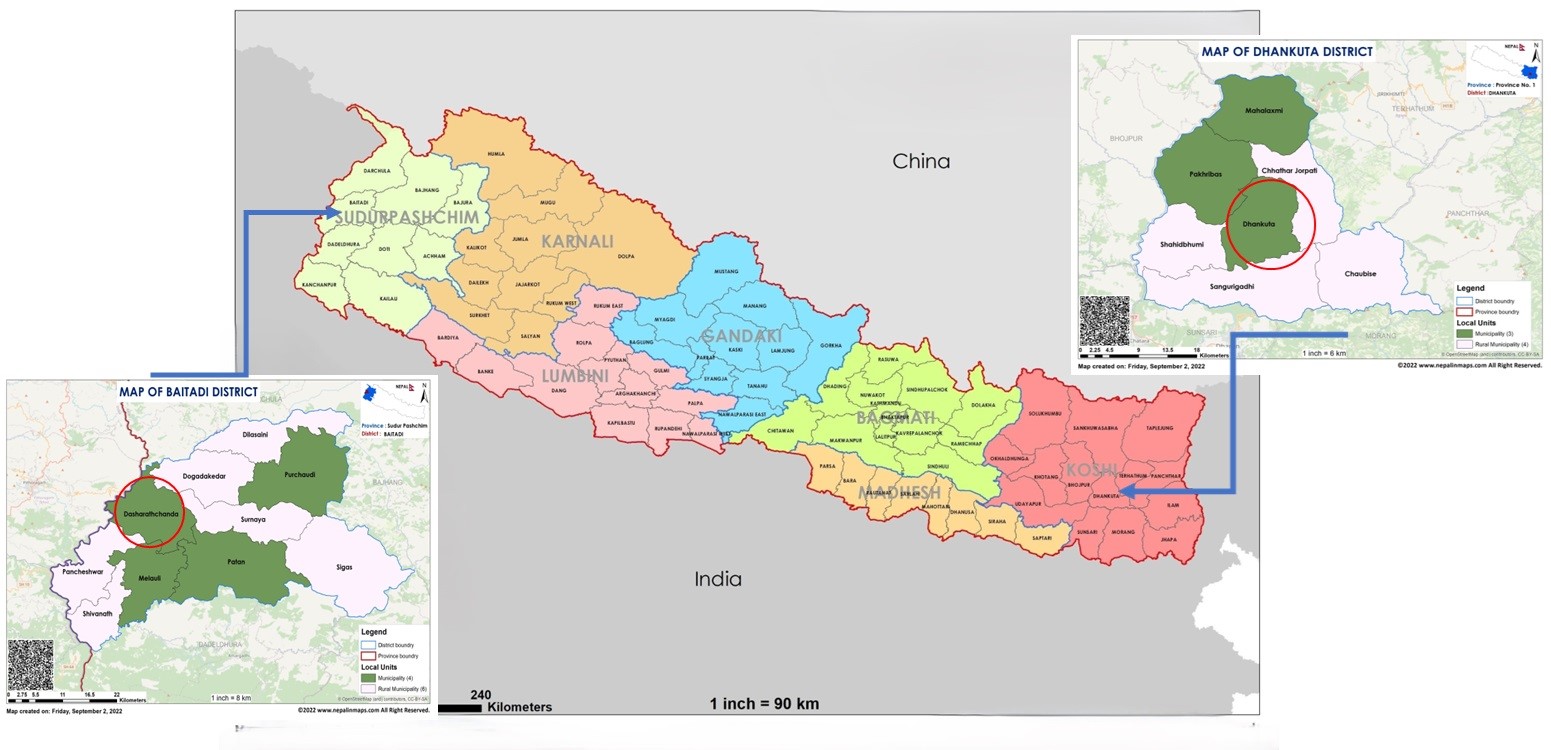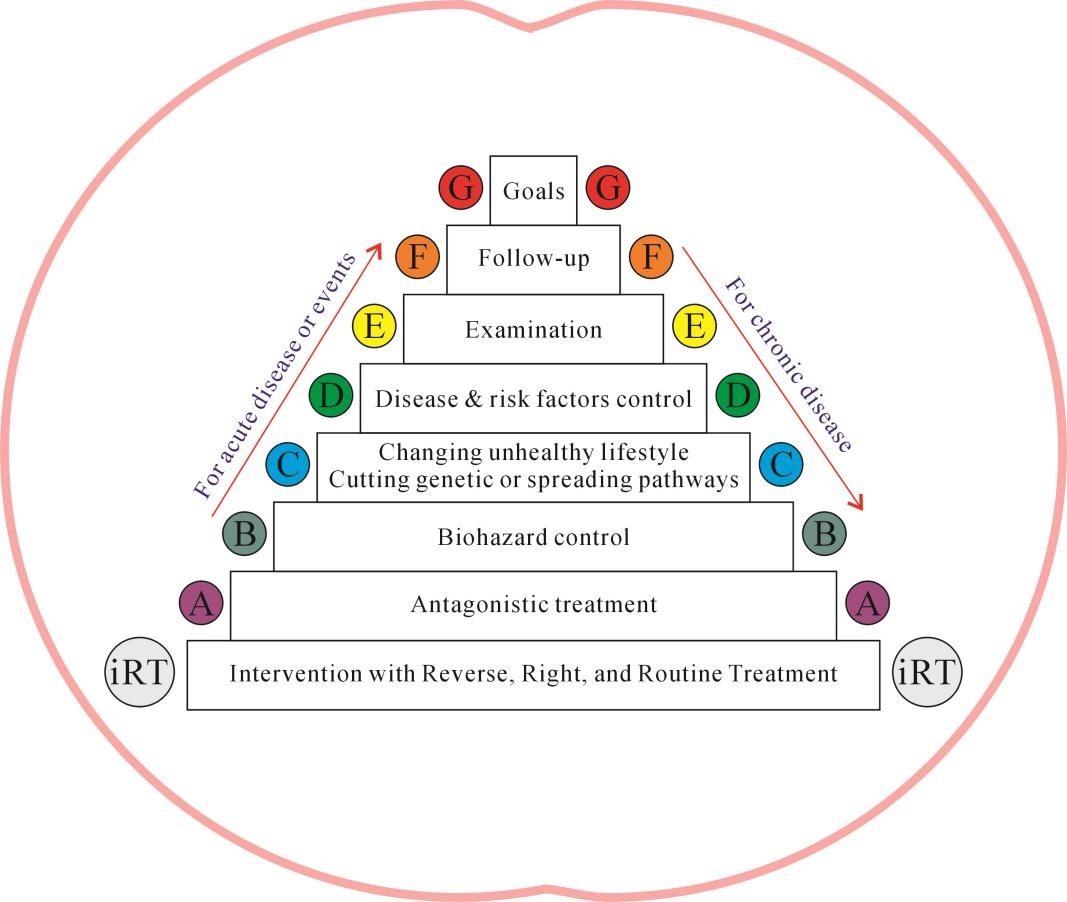Found 297 results
Perspective
09 September 2024Social, Ecological and Economic Synergies of Forests for Sustainability Contradict Projects Involving Large-Scale Deforestation for Energy Production
Good projects and solutions aiming at sustainable development must repair the damage done in past decades by being explicitly designed and monitored to achieve synergetic benefits for the environment and society. We identify environmental, social and economic aspects of sustainability in which enlightened forest management can increase the fulfillment of human and ecological needs and hence the quality of life of present and future generations. Projects aiming at energy production and profits at the cost of biodiversity, nature protection, and human health and well-being are therefore questionable and increasingly socially and politically unacceptable—especially where the viability of alternative options with better social and ecological footprints can be easily demonstrated. This is also true for renewable energy projects. The perspective presented here demonstrates how ostensibly renewable energy projects in natural areas, such as large-scale wind and solar power plants in traditional forests, which are planned, for example, in Germany, may be detrimental to ecological and social sustainability. Forests cut down for such projects are “non-renewable” within reasonable time-scales left to stabilize our climate and ecosystems. Such projects also impair the credibility of the proclaimed role model character and sustainability leadership of Global North countries, which can lead to negative implications for the protection of forests in tropical countries.

Review
06 September 2024Principles in Identification of Human Remains through Forensic Odontology
Human identification is the core component of Forensic Odontology. The process of identification of unknown remains generally starts with the reconstruction of the skeletal biological profile, which provides a general description of the individual that is used to narrow down the candidates for the identity. Once one or more candidates are given for the identity, forensic odontologists conduct the comparison between the antemortem and postmortem records. The postmortem vs. the antemortem data comparison implies the evaluation of the consistencies and inconsistencies found in the data sets. This comparison is highly affected by the quality and completeness of the antemortem records, as well as the condition of the remains. The principles of the odontological comparison are based on the differences in the dental and maxillofacial structures due to human variation, development and pathology, and the alteration caused by dental treatment, which can be visually and radiographically observed. Restorative treatment, osseointegrated dental implants, fixed orthodontic and prosthetic appliances, along with dental and maxillofacial anatomy are the most informative features for the postmortem vs. antemortem comparison. The process of comparison consists of an objective identification of the consistencies and discrepancies. However, their interpretation and the final conclusion relies on the forensic odontologist knowledge and proficiency. Computer software packages such as WinID, DVI System International and UVIS can assist in the comparisons, connecting the postmortem and antemortem information and creating a ranking of possible matches. Moreover, deep machine learning models are being explored automate the comparison process. However, all comparison procedures still require the expert’s final assessment.

Article
03 September 2024The Economic Impact of High-Speed Rail on Rural and Inner Urban Areas Economy: The Case Study of HSR Naples-Bari in South of Italy
High-speed rail (HSR) has revolutionized global transportation by providing fast, reliable, and efficient city-to-city travel. While its urban benefits are well-documented, the potential advantages for rural development are often overlooked. The high-speed rail project on the Naples-Bari route in Southern Italy aims to connect the urban centers of Naples in Campania and Bari in Apulia, traversing inland and rural areas. Initiated in 2016 and planned for completion in 2028, this project is anticipated to deliver numerous benefits. The purpose of this research is to examine the largely overlooked high-speed rail (HSR) in Southern Italy from an economic and territorial perspective and to determine whether it can sustainably promote rural development in the areas along the railway line. This study examines whether the HSR line will enhance economic activities, strengthen industries, and improve spatial accessibility in rural areas. Using a 2020 dataset covering 25 municipalities along the railway line, including those with stations and construction sites projected to open by 2024, three regression models were employed to estimate potential improvements in income and employment. The findings indicate mixed results: access time to airports improves, decreasing by 7%, while access to ports does not see similar benefits. Income shows a positive correlation with HSR, increasing with population growth around stations, suggesting a trend towards urban agglomeration. However, the study underscores that HSR is not universally beneficial for rural economies and that supportive development networks are crucial. Policies should adopt short-term strategies to strengthen future HSR projects and prepare for the anticipated surge in mass tourism to rural areas.

Review
02 September 2024A Review on the Application of Nanomaterials to Boost the Service Performances of Carbon-Containing Refractories
To meet the high-quality requirements for clean steel production and fully exploit the performance advantages of carbon-containing refractories, nanomaterial has been introduced into the matrix to develop advanced carbon-containing refractories. Nanomaterials, as critical additives, play a crucial role in developing novel refractories. The service performances of carbon-containing refractories are affected not only by their physical and chemical properties but also by their microstructure. This review provides a comprehensive overview of the latest research on oxide-carbon composite refractories containing nanomaterials, categorized by their composition: nanocarbons, nano oxides, and nano non-oxides. Incorporating nanomaterials can enhance the service performances of the refractories, optimizing phase composition and microstructure. Furthermore, future research directions in nanomaterial technology for carbon-containing refractories are discussed.

Article
02 September 2024Risk Factors for Adverse Outcomes Following Surgical Repair of Simple Coarctation in Early Infancy: A Ten-Year Single Center Review
Coarctation of the aorta is a frequently diagnosed congenital heart defect and often requires surgical repair in early infancy. Infants born with this condition remain at risk for post-operative morbidity and reintervention within the first year of life. A single-center, retrospective chart review was performed. The protocol was approved by the Institutional Review Board (IRB-21-156, 14 August 2021). A 10-year review from January 2010 to December 2020 identified all children diagnosed with coarctation of the aorta or arch hypoplasia; without any associated major congenital cardiac pathology (i.e., simple coarctation). Reintervention-free-survival at one year for all infants who underwent surgical repair was assessed. Patient characteristics for those who did and did not experience significant adverse event (SAE) in the postoperative period were obtained and compared. A total of 105 patients diagnosed with isolated coarctation of the aorta or arch hypoplasia and who underwent surgical repair were identified. Of these, 11 patients (10%) experienced a SAE (i.e., vocal cord palsy, diaphragm palsy, chylothorax, stroke/neurological complication, need for reintubation or tracheostomy, necrotizing enterocolitis, major bleeding or thrombotic vascular complication, or reintervention) in the post-operative period. Patients who experienced a SAE were more likely to have a prenatal diagnosis of coarctation of the aorta (p = 0.03), a known genetic anomaly (p = 0.0001), or had undergone a median sternotomy approach/complex arch repair (i.e., requiring patching of the aorta) (p = 0.0001). Genetic anomaly (mainly Turner syndrome) was the only independent predictor of SAE in multivariate analysis (OR = 6.7) Follow up data at one year was available for 79 patients, with only 6 patients requiring reintervention before 1 year of age. Overall, infants who undergo surgical repair of simple coarctation of aorta have an excellent chance of reintervention-free-survival at one year post intervention. Those with a known genetic anomaly or requiring median sternotomy approach appear to have a higher risk for a SAE in the postoperative period.

Article
02 September 2024Multi-Robot Cooperative Target Search Based on Distributed Reinforcement Learning Method in 3D Dynamic Environments
This paper proposes a distributed reinforcement learning method for multi-robot cooperative target search based on policy gradient in 3D dynamic environments. The objective is to find all hostile drones which are considered as targets with the minimal search time while avoiding obstacles. First, the motion model for unmanned aerial vehicles and obstacles in a dynamic 3D environments is presented. Then, a reward function is designed based on environmental feedback and obstacle avoidance. A loss function and its gradient are designed based on the expected cumulative reward and its differentiation. Next, the expected cumulative reward is optimized by a reinforcement learning algorithm that makes the loss function update in the direction of the gradient. When the variance of the expected cumulative reward is lower than a specified threshold, the unmanned aerial vehicle obtains the optimal search policy. Finally, simulation results demonstrate that the proposed method effectively enables unmanned aerial vehicles to identify all targets in the dynamic 3D airspace while avoiding obstacles.

Article
29 August 2024Incentive for Ecosystem Services: Governance and Policy Coherence in Nepal
This research highlights the governance of landscape and policy coherence to ensure a sustainable supply of ecosystem services through incentives for ecosystem schemes at the municipal level in Nepal. The study was carried out in Dhankuta and Dasarath Chand municipalities representing Nepal’s Koshi and Sudur Paschim provinces. Six aggregate governance indicators adopted by the World Bank Group were assessed through interviews with primary stakeholders of selected landscapes in two municipalities, followed by Key Informant Interviews. The study indicates that implementation of the Incentive for Ecosystem service scheme is feasible, creating multi-stakeholder institutions at the local level. However, there are several governance challenges to ensure its success. In particular, incentives for ecosystem schemes must be part of local government planning, where multisectoral coordination and collaboration are essential. While municipal authorities have constitutional jurisdictions to initiate such schemes, they lack the human resources to understand ecosystem management for a sustainable supply of ecosystem services. Therefore, landscape governance is essential to make incentive schemes successful and ensure transparency and equitable benefits among ecosystem service providers.

Article
28 August 2024Overcoming SME Legal and Regulatory Challenges and Fostering Sustainable Collaboration and 7PS Engineering in the Digital Age through Integrating the X.0 Wave Theory & SME 5.0 Concept
Technological innovations, education, business and society change quickly and often unpredictably. The fusion of artificial intelligence (AI), machine learning, augmented reality (AR), virtual reality (VR) and augmented reality (XR) opens a new era in which work, production, communication and thought processes are massively transformed. In this context, the challenge arises: How can small and medium-sized enterprises (SMEs) adapt to this accelerated change? This study highlights a path forward and introduces the concept of “SME 5.0” or “Hybrid SME” or “SME of Tomorrow” as a comprehensive solution to address the complexities of the digital age. In this integrated exploration of the X.0 Wave Theory and SME 5.0 Concept, the framework for human civilization’s evolution and technological shifts converges with a practical roadmap for small and medium-sized enterprises (SMEs) navigating the dynamic digital landscape. Acknowledging transformative waves in technology, economics, and societal structures within the X.0 Wave Theory, the study accentuates the ongoing nature of these shifts. It advocates for a long-term perspective, urging policymakers and industry leaders to consider potential future scenarios to devise strategies fostering innovation, competitiveness, and privacy safeguards. Simultaneously, the study introduces SME 5.0 as a holistic solution for SMEs, aligning with the transformative success envisioned by the X.0 Wave Theory. Proposing the Seven Pillars of Sustainability (7PS) framework tailored to SMEs, the concept emphasizes digitalization and sustainable technology. The title, “Harmonizing the X.0 Wave Theory and SME 5.0 Concept”, encapsulates the synergy between theoretical underpinnings and practical solutions. The subtitle, “Fostering Sustainable Collaboration, 7PS Engineering, and Overcoming Legal Challenges in the Digital Age”, provides a glimpse into the study’s focus on practical implications, sustainability, engineering, and legal considerations for SMEs in the rapidly evolving digital era.

Review
27 August 2024Strongly Correlated Electrons and High Temperature Superconductivity
It is very important to clarify the mechanism of high-temperature superconductivity in strongly correlated electron systems. The mechanism of superconductivity in high temperature cuprate superconductors has been studied extensively since their discovery. We investigate the properties of correlated electron systems and mechanism of superconductivity by using the optimization quantum variational Monte Carlo method. The many-body wave function is constructed by multiplying by correlation operators of exponential type. We show that d-wave superconducting phase exists in the strongly correlated region where the on-site repulsive interaction is as large as the bandwidth or more than the bandwidth. The d-wave pairing correlation function is shown as a function of lattice sites, showing that the long-range order indeed exists.

Review
27 August 2024A Novel Comprehensive Program Combining Optimal Medical Treatment with Lifestyle Modification for Type 2 Diabetes
There are more and more individuals with type 2 diabetes (T2D) in the globe. It’s a huge burden of public health and a great challenge in clinical due to a high linkage with atherosclerosis, cardiovascular disease (CVD), stroke, and cancer. However, little is known about a comprehensive program of management and self-management of T2D. This article introduces briefly the current status in T2D and an updated classical standardized comprehensive program which combines optimal medical treatment (OMT) (the glucagon-like peptide-1 receptor agonists, the sodium-glucose cotransporter 2 inhibitors, and the ultralong-acting, once-daily basal insulin) with lifestyle modification, that is, intervention of RT-ABCDEFG (iRT-ABCDEFG) for control and prevention of T2D, and discusses its advantages and prospects. As an effective comprehensive program and strategy for interventions of diabetes, this program can be used as a reversible, right, and routine treatment. Several pivotal goals including less major adverse cardiocerebrovascular events (MACCE) and diabetic complications, less medical costs, longer life expectancy, lower morbidity and mortality, and higher quality of life, will be realized by consistently practicing this program due to early diagnosis, OMT, and lifestyle modification for overall prevention. All in all, since T2D highly links to CVD and cancer, as well as other MACCE, this novel iRT-ABCDEFG program is very helpful in comprehensive management and self-management of T2D and worth recommending for further application and health care of T2D due to better clinical efficacy and cost-effective relationship.
